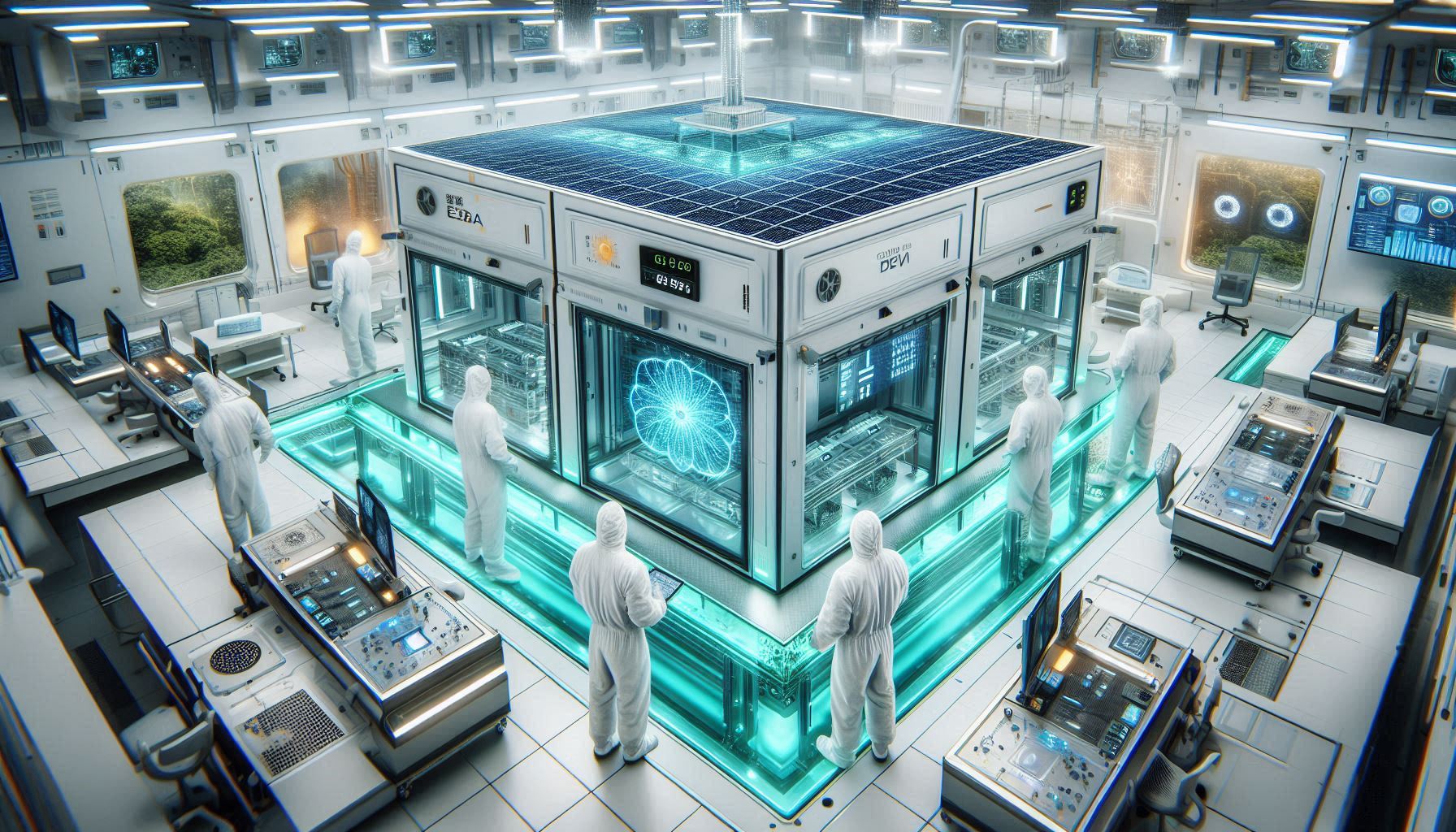Introduction
Clean room classification matter. They form the foundation for proper manufacturing conditions. In semiconductor fabrication and other high-tech environments, clean room classifications define how clean the air must be. These standards prevent contamination and ensure process reliability. Moreover, they guide engineers and facility managers in setting up systems. In this chapter, we decode clean room classifications. We explain ISO 14644-1, FS 209E, and IS 15518. We also compare their strengths. Finally, we show a hypothetical case that highlights their impact. Consequently, understanding clean room classifications improves routine operations.
Understanding Clean Room Classification
Clean room classifications set specific particle limits in a controlled area. They list the maximum number of particles allowed per cubic meter or per cubic foot. These classifications vary by standard. For instance, ISO 14644-1 defines classes from ISO 1 (the cleanest) to ISO 9. FS 209E categorizes cleanrooms using classes such as Class 100 and Class 10, whereas IS 15518 tailors its standards to align with regional requirements. In this section, we focus on the core ideas behind clean room classifications. We also use the term “clean room standards” as a synonym to reinforce our keyphrase.
Why Clean Room Classifications Are Crucial
Clean room classifications help prevent incidents. They guide the design of HVAC systems and filtration setups. They keep production consistent. Moreover, they meet regulatory demands. In turn, clean room classifications reduce defects and boost operational efficiency. Therefore, every facility must respect these standards.
ISO 14644-1: The Global Benchmark for Clean Room Classification
ISO 14644-1 is the international standard for clean room classifications. It measures cleanliness by the number of airborne particles present in each cubic meter of air. First, engineers use particle counters that measure as small as 0.1 µm. Then, they compare these counts against ISO limits. For example, an ISO Class 5 room allows a limited count of particles ≥ 0.5 µm.
Additionally, ISO 14644-1 supports consistency worldwide. Many industries adopt these clean room classifications. They cover sectors such as semiconductor manufacturing, aerospace, and pharmaceuticals. Clearly, ISO 14644-1 sets a detailed benchmark. As a result, it continues to be the most commonly recognized benchmark for cleanroom classification.
FS 209E: The U.S. Clean Room Standard
FS 209E was the U.S. standard for clean room classifications. Although discontinued today, it remains influential. This standard measured particle counts per cubic foot instead of per cubic meter. As a result, FS 209E defined classes such as Class 1, Class 10, and Class 100.
Let us compare FS 209E with ISO 14644-1. FS 209E uses imperial units, which require conversion to metric units. Moreover, its classification numbers differ from ISO’s incremental levels. Nevertheless, many legacy facilities still refer to FS 209E. In summary, FS 209E played a key role in early clean room classifications.
IS 15518: The Emerging Regional Standard
IS 15518 serves certain regional needs. It adapts clean room classifications to local environmental and regulatory demands. This standard uses a metric system like ISO 14644-1. It also incorporates local air quality factors and industry practices. In this way, IS 15518 delivers targeted guidance for select sectors.
Furthermore, IS 15518 aligns with global expectations while addressing local needs. For industries facing unique climate or regulatory challenges, IS 15518 offers a flexible framework. Thus, clean room classifications under IS 15518 can complement ISO standards. This dual approach helps facilities achieve excellence.
Comparative Analysis of Clean Room Classification
Let us now compare the three standards side by side:
- Measurement Units: FS 209E uses cubic feet. ISO 14644-1 and IS 15518 use cubic meters. This difference adds complexity. However, conversion remains simple.
- Classification Ranges: ISO 14644-1 has a broad range (ISO 1 to ISO 9). FS 209E defines classes (e.g., Class 100). IS 15518 often mirrors ISO but may include extra factors. Here, clean room classifications differ in granularity.
- Industry Applications: New facilities usually follow ISO 14644-1. Legacy facilities often reference FS 209E. Some regional industries choose IS 15518. Therefore, clean room classifications serve various needs.
Overall, each standard has advantages and limitations. ISO 14644-1 provides detailed, scalable guidelines. FS 209E offers simplicity. IS 15518 gives local adaptability. These differences highlight the importance of standard-specific clean room classifications.
Hypothetical Case Study: Upgrading Clean Room Classification
Consider a modern semiconductor fabrication plant that wishes to improve its clean room environment. Initially, the facility used older benchmarks loosely based on outdated clean room classifications. After a rigorous audit, the discrepancy became clear. The measured particle counts exceeded current limits.
Consequently, engineers decided to upgrade the facility using ISO 14644-1 as the primary guide. They also reviewed aspects of IS 15518 to tailor the solution locally. First, they installed state-of-the-art particle counters. Next, they replaced old filters with high-efficiency units. Furthermore, the HVAC system was enhanced with real-time monitoring and control capabilities.
After these changes, the facility achieved an ISO Class 5 rating. This upgrade reduced defects and increased production yields. It also ensured compliance with international clean room classifications. Ultimately, the facility benefitted from improved stability and reduced downtime. This case vividly demonstrates the critical role of clean room classifications in modern manufacturing.
Challenges in Implementing Clean Room Classification
Even with clear clean room classifications, many challenges persist. Let us explore a few:
- Instrumentation and Calibration: Using accurate particle counters remains essential. Calibration errors can mislead clean room classifications. Thus, regular checks are necessary.
- Dynamic Environmental Conditions: Factors such as equipment heat and human activity alter particle counts. Robust HVAC systems must adjust quickly. In response, facilities need dynamic monitoring.
- Training and Expertise: Staff must understand clean room classifications thoroughly. They also need to act swiftly when deviations occur. Therefore, regular training becomes crucial.
- Cost Implications: Upgrading systems to meet strict clean room classifications may require high initial investments. However, these costs pay off by reducing defects and boosting yields later.
In summary, while clean room classifications set the standards, maintaining compliance demands continuous effort.
Future Trends in Clean Room Classification and Standards
Clean room classifications continue to evolve with technology. Emerging trends include:
- Digital Integration: Facilities now use AI and IoT sensors. These tools monitor clean room classifications in real time. They also predict system failures. Consequently, the integration of digital systems enhances overall operational efficiency.
- Granularity and Precision: New standards may become even more detailed. This enhanced precision will further reduce particulate contamination. In turn, clean room classifications will offer greater reliability.
- Global Harmonization: There is a movement to standardize clean room classifications worldwide. This effort simplifies international manufacturing. Consequently, facilities can better meet global demands.
- Sustainability Considerations: Future standards may include energy use and environmental impacts. This change encourages greener practices while preserving strict clean room classifications.
These future trends will ensure that clean room classifications remain relevant in a rapidly changing environment.
Concluding Reflections
Clean room classifications are vital to managing high-tech manufacturing processes. They set the limits, guide operational decisions, and ensure regulatory compliance. In short, these standards keep production safe and efficient. By understanding ISO 14644-1, FS 209E, and IS 15518, facility managers can design better systems. Ultimately, robust clean room classifications improve yield, reduce defects, and protect products.
This chapter showed how each standard defines clean room classifications differently. It compared their metrics, applications, and challenges. It also presented a case study to demonstrate real-world impacts. As technology evolves, so too will clean room classifications. Manufacturers must adapt continuously to maintain excellence.
Disclaimer
The content here is intended solely for educational and informational purposes. All case studies, examples, and hypothetical scenarios are illustrative in nature and do not refer to, endorse, or represent any actual company, organization, or product. Any similarity to real-world entities or events is purely coincidental. Readers are encouraged to verify any technical details or operational recommendations with additional, independent research prior to implementation. The author and publisher assume no responsibility or liability for any errors, omissions, or outcomes resulting from the use of this material.












Leave a Reply